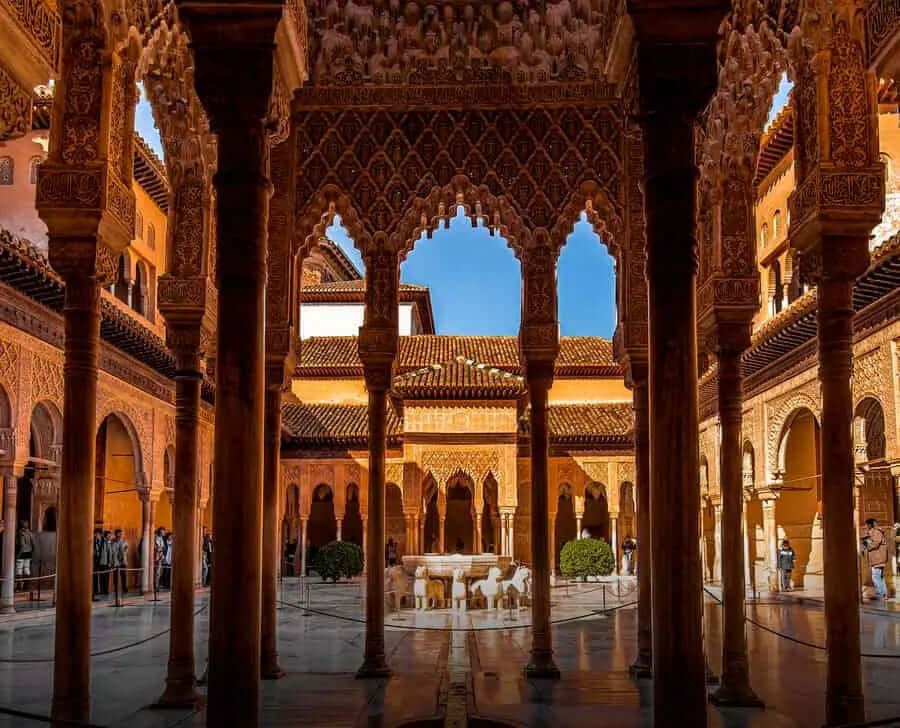The Alhambra in Granada: An architectural jewel of the world

The Alhambra in Granada is one of the most impressive monuments in the world and one of the most important architectural treasures of Spain. This fortress and palace, built during the Muslim era, has been the object of admiration and study for centuries. In this article, we will take you on a journey through the history and details of the Alhambra, discovering its beauty and its value as a world heritage site.
History of the Alhambra: The Alhambra was built in the 13th century by the Sultan of Granada, Muhammad ben Al-Ahmar, as a fortress to protect the city from Christian attacks. However, over the following centuries, it was transformed into a luxurious palace for the Nasrida dynasty. In the 15th century, Granada fell to the Catholic Monarchs and the Alhambra became a royal residence. Over the years, it has undergone various modifications and restorations, but it remains an impressive example of Andalusian architecture.
The beauty of the Alhambra: The Alhambra is a masterpiece of Islamic art and architecture. Inside, you will find patios, gardens, fountains and numerous rooms decorated with inscriptions and mosaics. One of the most impressive elements of the Alhambra are the muqarnas ceilings, a decoration technique that consists of a set of small pieces of wood that form an intricate design. In addition, the rooms of the palace are decorated with tiles and plasterwork, which makes for an impressive visual experience.
Value as a World Heritage Site: In 1984, the Alhambra was declared a World Heritage Site by UNESCO. This distinction is due to its value as an example of Islamic architecture and the impact it has had on European culture. In addition, the Alhambra is a testimony of the coexistence between different cultures in the Iberian Peninsula and an example of the creativity and artistic ability of Andalusian artisans.
Curiosities about the Alhambra:
- The word "Alhambra" comes from Arabic and means "red", in reference to the color of the palace walls.
- The Alhambra has been a source of inspiration for many artists, such as the poet Federico García Lorca and the musician Paco de Lucía.
- In the Court of the Lions, there is a fountain supported by 12 marble lions, each with a different expression.
The Alhambra in Granada is an architectural jewel that you cannot miss if you visit Spain. Its history, its beauty and its value as a World Heritage Site make it one of the most impressive places in the world.





